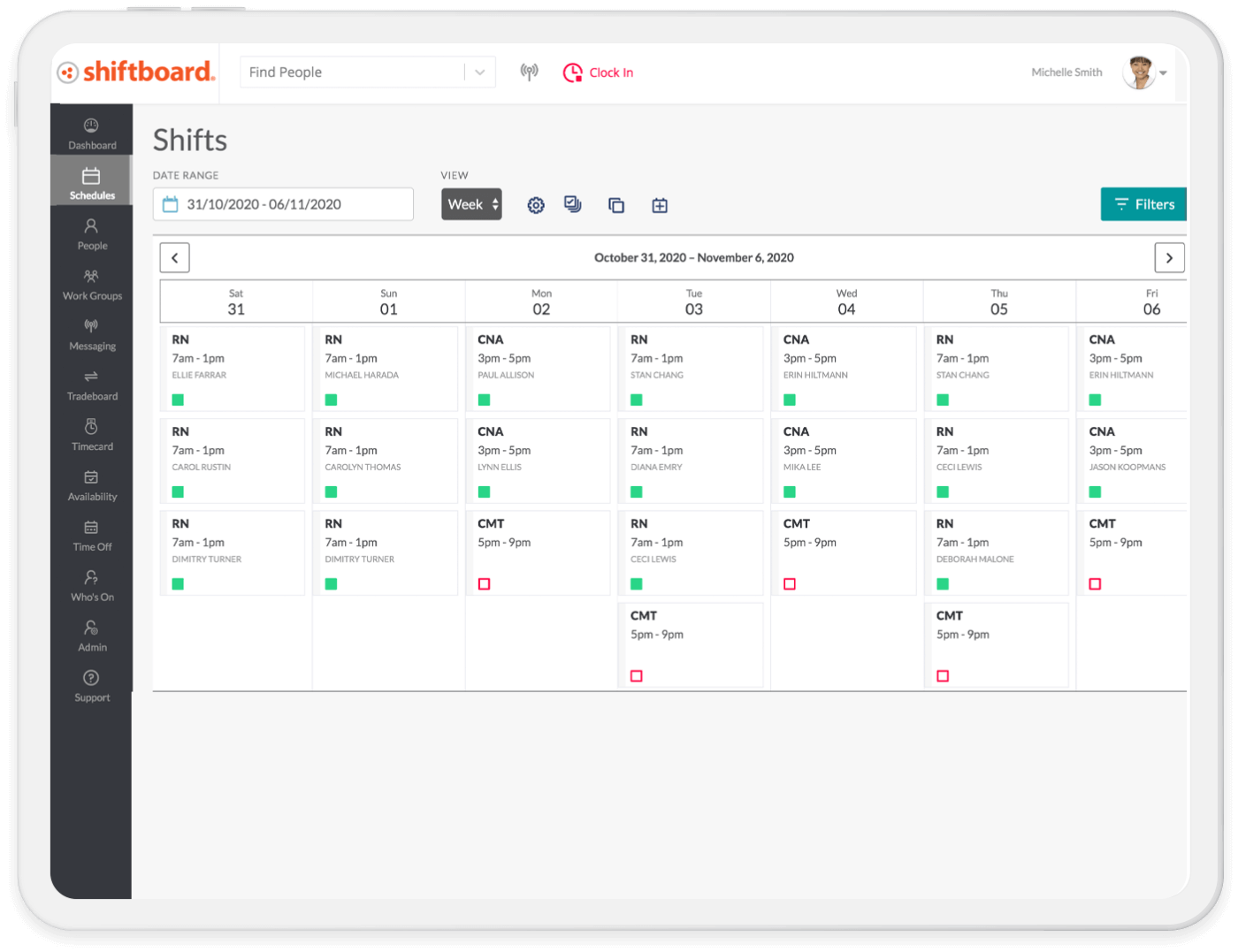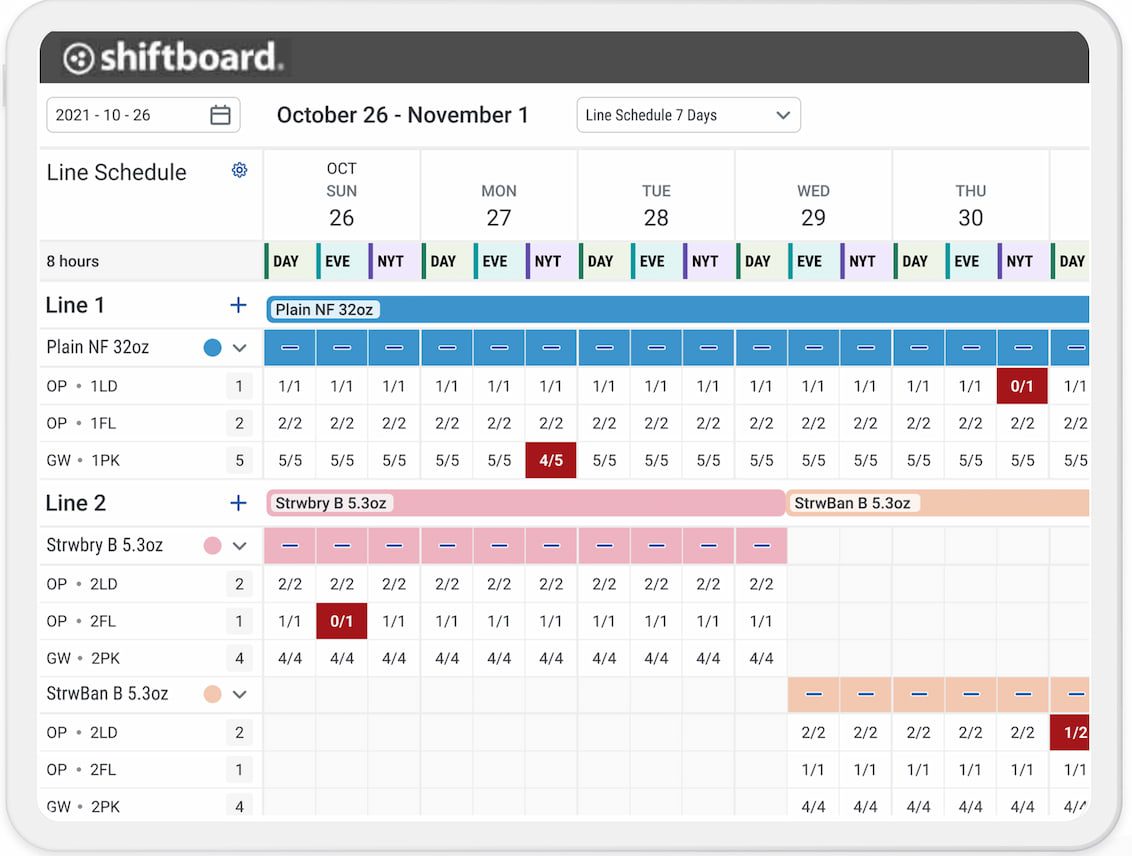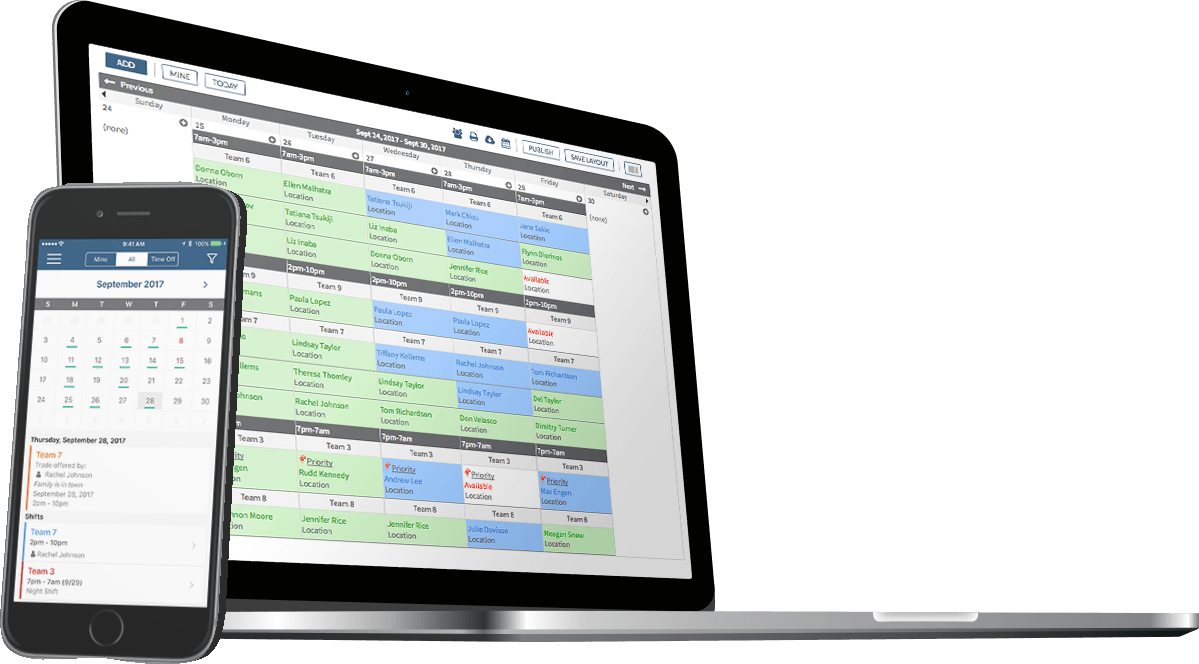Shiftboard: Efficient Scheduling & Workforce Solutions!
Is workforce management the silent killer of productivity and profitability in crucial sectors like healthcare and energy? The inefficiencies embedded in outdated scheduling systems can be dramatically impacting your bottom line, employee satisfaction, and even safety.
The struggle to optimize workforce operations is a persistent challenge across industries. In healthcare, the complexities of nurse scheduling, float pool management, and ensuring adequate coverage can lead to burnout and compromised patient care. In the energy sector, safety compliance is paramount, and scheduling plays a critical role in preventing errors and maintaining operational integrity. Across the board, businesses are grappling with issues like high turnover rates, excessive overtime costs, and the administrative burden of manual rostering processes. The solution lies in embracing innovative technologies that streamline scheduling, enhance communication, and empower employees.
The promise of efficient scheduling in hospitals and clinics remains largely unfulfilled for many organizations. Traditional methods often involve spreadsheets, manual data entry, and a reliance on phone calls and emails to manage shift changes and time-off requests. This not only consumes valuable administrative time but also creates opportunities for errors, miscommunication, and scheduling conflicts. The consequences can be significant, ranging from understaffed units and delayed patient care to overworked employees and increased healthcare costs. The need for a more streamlined and automated approach is undeniable.
- Vegamovies Discover The Future Of Entertainment Year Trends
- Grant Dawson Ufckmpferprofil News Statistik Mehr
| Amy Merlino, MD - Biography | |
|---|---|
| Full Name | Amy Merlino, MD |
| Title | Enterprise Chief Medical Information Officer |
| Organization | [Insert Organization Name Here] |
| Career Overview | Dr. Merlino is an experienced physician executive with a proven track record of leading successful healthcare technology implementations. Her expertise lies in bridging the gap between clinical practice and IT solutions, ensuring that technology serves the needs of both patients and providers. She has a deep understanding of the challenges and opportunities facing healthcare organizations in today's rapidly evolving landscape. |
| Professional Information |
|
| Key Accomplishments |
|
| Reference Link: [Insert Organization Name] Website |
In a recent Q&A, Dr. Amy Merlino, Enterprise Chief Medical Information Officer at [Insert Organization Name], discussed the organization's upgrade to a new system, detailing the implementation process and strategies for managing change effectively at this level. The insights shared highlight the importance of careful planning, communication, and user training in ensuring a smooth transition and maximizing the benefits of the new technology. Dr. Merlino emphasized the need to involve stakeholders from across the organization in the planning and implementation process, fostering a sense of ownership and buy-in.
Shiftboard emerges as a potential solution to address these challenges. Its capabilities extend beyond basic scheduling, offering features designed to optimize workforce deployment, improve communication, and ensure compliance. But how exactly does Shiftboard achieve these outcomes in demanding environments like hospitals, clinics, and energy facilities?
Consider the energy sector, where safety is paramount and regulatory compliance is non-negotiable. Scheduling in this industry involves managing complex shift rotations, accounting for specialized skills and certifications, and ensuring adequate coverage for critical tasks. Shiftboard aims to help energy companies meet these demands by providing tools for tracking employee qualifications, automating shift assignments, and generating reports for compliance audits. The ability to quickly identify and deploy qualified personnel to specific locations can be crucial in preventing accidents and maintaining operational efficiency.
- Christophers Pizza Find Delicious Deals More
- Corinna Jagger The Untold Story Of Mick Jaggers Daughter
Shiftboard also addresses the broader challenges of workforce operations by providing a centralized platform for managing employee availability, tracking time and attendance, and communicating shift updates. This can lead to significant improvements in rostering efficiency, reduced administrative overhead, and increased employee satisfaction. By empowering employees with self-service tools for managing their schedules and requesting time off, Shiftboard aims to foster a more engaged and productive workforce. This increased efficiency is not merely theoretical. Customers using Shiftboard have reported an average 30% increase in rostering efficiency, highlighting the tangible benefits of the platform.
For example, Shiftboard's customers have reported significant improvements in key business outcomes. These include an average of 88% higher shift coverage, indicating a more reliable and predictable workforce. A 16% reduction in employee turnover suggests that Shiftboard can contribute to a more stable and engaged workforce, reducing the costs associated with recruitment and training. And a 23% reduction in overtime costs points to more efficient scheduling practices and better workforce utilization. These figures suggest that Shiftboard can have a measurable impact on an organization's bottom line.
Nurse scheduling, in particular, presents unique challenges. The need to balance patient care demands with the preferences and availability of nurses requires a flexible and responsive scheduling system. Shiftboard offers features specifically designed to address these challenges, including tools for managing float pools, tracking employee certifications, and automating shift assignments based on pre-defined rules and criteria. By streamlining the nurse scheduling process, Shiftboard aims to free up nurse managers to focus on patient care and other critical tasks.
The integration of Shiftboard with existing systems can also be a key factor in its success. Site-specific login and single sign-on (SSO) capabilities simplify the user experience and reduce the risk of security breaches. By seamlessly connecting with other HR and payroll systems, Shiftboard aims to eliminate data silos and streamline administrative processes. This integration can save time and money, while also improving the accuracy and reliability of workforce data.
Ultimately, the goal of any workforce management system is to improve efficiency, reduce costs, and enhance employee satisfaction. Shiftboard seeks to achieve these goals by providing a comprehensive platform for managing employee schedules, tracking time and attendance, and communicating with the workforce. By automating routine tasks, streamlining workflows, and empowering employees with self-service tools, Shiftboard aims to create a more productive and engaged workforce. This, in turn, can lead to improved patient care, reduced operational costs, and a more sustainable business model.
The promise of seamless hospital administration hinges on effective scheduling practices. When schedules are organized and readily accessible, both patients and providers benefit. Patients can easily access appointment information and plan their care accordingly, while providers can effectively manage their time and resources. This improved coordination can lead to better patient outcomes, reduced wait times, and increased patient satisfaction. The key lies in adopting technologies that streamline scheduling, enhance communication, and empower both patients and providers with the information they need.
The challenges of modern workforce management demand innovative solutions. Shiftboard is one such solution that aims to address these challenges by providing a comprehensive platform for managing employee schedules, tracking time and attendance, and communicating with the workforce. Its features are designed to optimize workforce deployment, improve communication, and ensure compliance in demanding environments like hospitals, clinics, and energy facilities. By embracing these technologies, organizations can unlock significant improvements in efficiency, reduce costs, and enhance employee satisfaction.
However, the decision to implement a workforce management system like Shiftboard requires careful consideration. Organizations must assess their specific needs and challenges, evaluate the capabilities of different solutions, and develop a comprehensive implementation plan. It is also important to involve stakeholders from across the organization in the decision-making process, ensuring that the chosen solution meets their needs and expectations. With careful planning and execution, organizations can harness the power of workforce management technology to achieve significant improvements in their operations.
The future of workforce management is likely to be driven by advancements in artificial intelligence (AI) and machine learning (ML). These technologies have the potential to automate many of the routine tasks associated with scheduling, such as forecasting demand, optimizing shift assignments, and managing time-off requests. AI and ML can also be used to identify patterns and trends in workforce data, providing insights that can help organizations make better decisions about staffing levels, employee training, and other key areas. As these technologies continue to evolve, they are likely to play an increasingly important role in shaping the future of workforce management.
Moreover, the increasing prevalence of remote work and flexible scheduling arrangements will further complicate the challenges of workforce management. Organizations will need to adapt their scheduling practices to accommodate the needs of remote workers, ensuring that they have the tools and resources they need to stay connected and productive. This will require a shift towards more flexible and adaptable scheduling systems that can accommodate a variety of work arrangements. The ability to manage remote workers effectively will be a key differentiator for organizations in the years to come.
The importance of employee engagement in workforce management cannot be overstated. Employees who are engaged in their work are more likely to be productive, satisfied, and committed to their organizations. Workforce management systems can play a key role in fostering employee engagement by providing employees with self-service tools for managing their schedules, requesting time off, and communicating with their colleagues. By empowering employees with greater control over their work lives, organizations can create a more positive and engaging work environment.
Data security and privacy are also critical considerations in workforce management. Organizations must ensure that their workforce management systems are secure and that they comply with all applicable data privacy regulations. This includes protecting employee data from unauthorized access, use, and disclosure. Organizations should also be transparent with employees about how their data is being used and give them the opportunity to access and correct their information. By prioritizing data security and privacy, organizations can build trust with their employees and protect their valuable assets.
In conclusion, the challenges of modern workforce management are complex and multifaceted. However, by embracing innovative technologies, such as Shiftboard, and adopting best practices for scheduling, communication, and employee engagement, organizations can unlock significant improvements in efficiency, reduce costs, and enhance employee satisfaction. The key is to approach workforce management strategically, with a focus on continuous improvement and a commitment to meeting the evolving needs of the workforce.
The path to optimized workforce operations demands a holistic approach, one that integrates technology, process improvement, and employee engagement. Shiftboard offers a powerful platform for achieving these goals, but its success depends on careful planning, effective implementation, and a commitment to continuous improvement. Organizations that embrace this approach will be well-positioned to thrive in today's competitive landscape.
The evolution of workforce management continues, driven by technological advancements, changing workforce demographics, and the increasing demands of a globalized economy. Organizations that stay ahead of the curve by embracing innovation and adapting their practices to meet the evolving needs of the workforce will be the most successful in the long run. The future of work is here, and it demands a new approach to workforce management.
The ability to adapt and evolve is paramount in today's dynamic business environment. Organizations must be willing to embrace new technologies and experiment with different approaches to workforce management in order to stay competitive. This requires a culture of innovation and a willingness to challenge the status quo. By fostering a culture of continuous improvement, organizations can ensure that their workforce management practices are always aligned with their business goals.
Furthermore, the focus on employee well-being is becoming increasingly important in workforce management. Organizations are recognizing that employees who are healthy, happy, and engaged are more likely to be productive and committed to their organizations. This has led to a greater emphasis on providing employees with resources and support to promote their physical, mental, and emotional well-being. Workforce management systems can play a role in this by providing employees with access to wellness programs, flexible scheduling options, and other benefits that support their overall well-being.
The interconnectedness of the global economy also presents challenges and opportunities for workforce management. Organizations that operate in multiple countries must navigate a complex web of regulations, cultural differences, and time zones. This requires a sophisticated workforce management system that can accommodate these complexities and ensure compliance with all applicable laws and regulations. The ability to manage a global workforce effectively is a key competitive advantage in today's globalized economy.
In conclusion, the effective management of a workforce is no longer just an administrative task; it is a strategic imperative. Organizations that recognize this and invest in the right technologies and practices will be well-positioned to thrive in the years to come. The future of work is uncertain, but one thing is clear: organizations that prioritize their workforce and invest in their well-being will be the most successful.
The journey to workforce optimization is an ongoing process, one that requires continuous learning, adaptation, and innovation. Organizations that embrace this mindset will be well-equipped to navigate the challenges of the modern workplace and achieve their business goals.
Ultimately, the success of any workforce management system depends on its ability to meet the needs of both the organization and its employees. By providing a user-friendly platform, empowering employees with self-service tools, and fostering a culture of communication and collaboration, organizations can create a win-win situation for everyone involved. The key is to focus on creating a positive and engaging work environment that supports the well-being and success of all employees.
The evolving landscape of work demands a proactive and adaptable approach to workforce management. Organizations must be prepared to embrace change, experiment with new technologies, and prioritize the needs of their workforce in order to remain competitive and thrive in the years to come. The future of work is here, and it is time to embrace it.
- Viralkand The Future Of Viral Content News Today
- Free Iot Remote Ssh Streamline Device Management Now

Nurse Scheduling Software Shiftboard

Automated Employee Shift Scheduling Software Shiftboard

Employee Scheduling & Workforce Management Solution Shiftboard